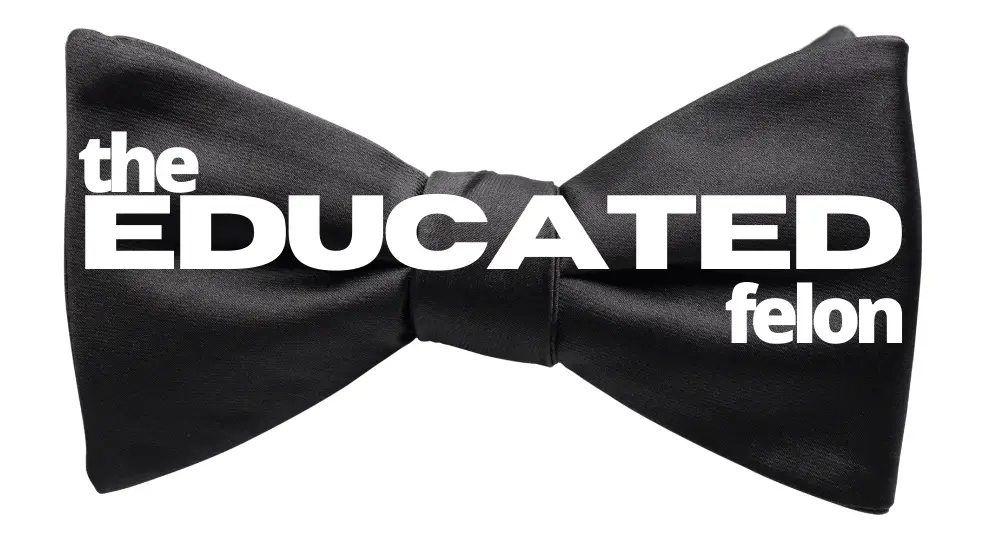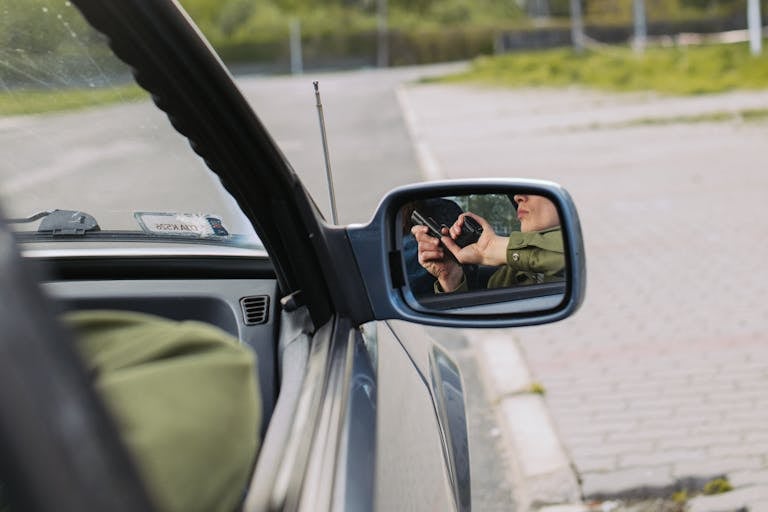3 Strikes Law in 2025: How Does This Affect My Felony Conviction?
In criminal justice, a few policies such as the Three Strikes Law have stirred up much controversy. But what exactly is the 3 strikes law, and how does it affect real people with felony convictions in 2024? Let’s dive into the nitty-gritty of this tough-on-crime approach and explore its far-reaching consequences.
What is the Three Strikes Law?
The Three Strikes Law is a sentencing policy that significantly increases the prison terms of persons convicted of a felony who have been previously convicted of two or more violent crimes or serious felonies. Here’s what you need to know:
- Origin: The law was first enacted in Washington State in 1993, but gained nationwide attention after California passed its version in 1994.
- Basic concept: Three felony convictions result in a mandatory life sentence.
- Variations: Different states have their versions of the three strikes legislation, with varying degrees of severity.
The Real-Life Impact: Stories from the Strike Zone
To truly understand the Three Strikes Law, we need to look at how it affects real people. Let’s explore some eye-opening examples:
Case Study 1: The $150 Shoplifting Incident
- The situation: In 1995, Jerry Dewayne Williams stole a slice of pizza from a group of children in Redondo Beach, California.
- The result: Due to his prior convictions, this petty theft counted as his “third strike,” resulting in a sentence of 25 years to life.
- The aftermath: Williams’ case sparked outrage and debate about the proportionality of Three Strikes sentences for someone with prior convictions.
Case Study 2: The Baseball Bat Burglar
- The situation: In 2000, Kevin Weber broke into a restaurant in California, stealing $100 from the cash register.
- The twist: Weber used a baseball bat to break in, which classified the burglary as a “serious or violent crimes” felony under California law.
- The result: This third strike earned Weber a sentence of 26 years to life due to prior felony convictions.
Case Study 3: The Reform Success Story
- The situation: In 2012, Shane Taylor was serving a life sentence for drug possession, his third strike.
- The change: California voters passed Proposition 36, reforming the Three Strikes Law.
- The result: Taylor was resentenced and released after serving 16 years, now working as an advocate for criminal justice reform.
The Ripple Effect: How 3 Strikes Law Impacts Lives Beyond Prison
The consequences of a 3 Strikes Law conviction extend far beyond the prison walls. Offenders convicted under the Three Strikes Law face significant challenges in employment, housing, and family relationships, which can hinder their reintegration into society. Here’s how it affects various aspects of a person’s life:
Employment Challenges
- 🚫 Many employers are hesitant to hire individuals with multiple felony convictions.
- 📊 According to a 2018 study, only 12.5% of employers said they would definitely or probably hire an applicant with a criminal record.
- 💼 Certain professions, such as law enforcement, education, and healthcare, may be completely off-limits.
Housing Hurdles
- 🏠 Federal law allows public housing agencies and private landlords to deny housing to people with criminal records.
- 📈 A 2015 survey found that 80% of landlords use criminal background checks to screen potential tenants.
- 🔑 This can lead to homelessness or unstable living situations for those released from prison.
Family and Relationships
- 👨👩👧👦 Long sentences under Three Strikes laws and prior convictions can tear families apart.
- 🧒 Children of incarcerated parents are more likely to experience poverty, behavioral issues, and their own involvement with the criminal justice system.
- 💔 Maintaining relationships during long prison sentences is challenging, leading to increased isolation.
Financial Fallout
- 💰 Felony convictions can result in the loss of professional licenses and certifications.
- 🏦 Many banks are reluctant to provide loans to individuals with multiple felony convictions.
- 💸 The combination of employment difficulties and financial restrictions can trap individuals in a cycle of poverty.
The Numbers Don’t Lie: Three Strikes by the Statistics
Let’s break down some key stats that illustrate the impact of Three Strikes laws and prior convictions:
- Incarceration rates:
- 📊 Since the implementation of the Three Strikes laws, the U.S. prison population has increased by over 500%.
- 🏛️ California’s prison population alone grew by 31% in the first three years after implementing its Three Strikes law. The law significantly impacted violent crime rates, with notable changes observed before and after its enactment.
- Racial disparities:
- 👥 African Americans are 13 times more likely to be sentenced under Three Strikes laws than white offenders.
- 🔢 In California, African Americans make up 6.5% of the state’s population but account for 45% of third-strike inmates.
- Costs:
- 💲 The average cost to incarcerate an inmate in California state prison is over $81,000 per year.
- 📈 The state has spent an estimated $19.2 billion on inmates serving life sentences due to Three Strikes since the law’s inception.
The Debate Continues: Arguments For and Against
The 3 Strikes Law remains a topic of heated debate. Here are some key arguments on both sides:
Supporters Say
- The Three Strikes Law targets repeat offenders of violent felony crimes, enhancing public safety by ensuring that individuals with past violent felony convictions face stricter sentencing. This law aims to deter repeat offenses and reduce crime rates by incapacitating habitual offenders.
- It provides a clear and consistent framework for sentencing, which helps to ensure that justice is served fairly and predictably.
- The law acts as a strong deterrent against committing serious crimes, as potential offenders are aware of the severe consequences of repeated criminal behavior.
Critics Say
- The law can lead to disproportionately harsh sentences for relatively minor offenses, especially when the third strike is a non-violent crime.
- It contributes to prison overcrowding and places a significant financial burden on the state’s correctional system.
- There is evidence to suggest that the law does not significantly deter crime and may, in some cases, exacerbate social inequalities.
Supporters Say:
- ✅ It keeps dangerous repeat offenders of violent felonies off the streets.
- ✅ It serves as a strong deterrent to potential criminals of violent offense.
- ✅ It provides justice and closure for victims of serious crimes.
Critics Argue:
- ❌ It leads to disproportionate sentences for relatively minor nonviolent crimes.
- ❌ It contributes to prison overcrowding and strains state budgets.
- ❌ It disproportionately affects minority communities.
Looking Ahead: The Future of Three Strikes Laws
As we move further into 2024, the conversation around Three Strikes laws continues to evolve:
- Reform efforts: Many states are considering or have already implemented reforms to their Three Strikes laws, focusing on violent offenses and crimes committed only.
- Alternative approaches: There’s growing interest in rehabilitation programs and alternative sentencing for non-violent offenders.
- Public opinion shift: Recent polls show increasing support for criminal justice reform, including modifications to Three Strikes laws.
- Legal challenges: Constitutional challenges to Three Strikes laws (strikes reform act) continue to make their way through the court system. Recent Supreme Court rulings, such as the Ewing v. California decision, have addressed significant legal questions and upheld the law’s constitutionality.
The Bottom Line: Navigating Life After 3 Strikes Law
For those affected by the 3 Strikes laws, the road ahead can be challenging. However, there are resources and strategies that can help:
- 🎓 Seek education and training opportunities, even while incarcerated.
- 🤝 Connect with advocacy groups and support networks foran ex-repeat offender.
- 📜 Explore expungement or record-sealing options, where available.
- 💼 Look for “second chance” employers who are open to hiring individuals with criminal records.
- 🗣️ Share your story to raise awareness about the impact of Three Strikes laws.
Frequently Asked Questions: Three Strikes Law and Its Impact
To help you better understand the Three Strikes Law and its effects on individuals, we’ve compiled a list of frequently asked questions. These answers provide crucial information for anyone navigating the complexities of felony convictions under this law.
Q: How does the Three Strikes Law affect sentencing for repeat offenders?
The Three Strikes Law significantly increases the penalties for repeat offenders, often leading to life sentences for those convicted of three or more serious crimes. This law aims to deter habitual criminals by imposing harsher sentences. Additionally, the Violent Crime Control and Law Enforcement Act of 1994 has played a crucial role in shaping sentencing policies for repeat offenders, mandating life imprisonment for certain violent felons, and providing states with a framework for enacting similar laws.
Q: What crimes fall under the 3 strikes law?
The specific crimes that count as “strikes” can vary by state, but generally include:
- Violent felonies (e.g., murder, rape, robbery)
- Serious felonies (e.g., burglary, arson)
- Some drug offenses (in certain states)
- Any felony resulting in great bodily injury
🔑 Key point: It’s crucial to check your specific state’s laws, as the definition of a “strike” offense can differ significantly.
Q: What happens if you get 3 strikes?
If you accumulate three “strikes” under this law:
- You may face a mandatory minimum sentence of 25 years to life in prison
- In some states, you could receive a life sentence without the possibility of parole
- Your case may have limited options for plea bargaining
- Judges often have less discretion in sentencing
⚖️ Important note: The severity of the sentence can depend on the specific state’s version of the law and the nature of the third strike offense.
Q: Which states do not have the 3 strikes law?
As of 2024, several states do not have Three Strikes laws. These include:
- Maine
- Vermont
- New Hampshire
- New York
- Iowa
- West Virginia
🗺️ Remember: Laws can change, and some states may have similar habitual offender laws that function like Three Strikes laws.
Q: How does the Three Strikes Law affect sentencing for repeat offenders?
For repeat offenders, the Three Strikes Law can:
- Significantly increase sentence lengths
- Remove or reduce judicial discretion in sentencing
- Eliminate the possibility of probation or alternative sentencing options
- Result in life sentences for relatively minor third strike offenses
📊 Statistic: In California, before reforms in 2012, 54% of inmates serving time under the Three Strikes Law were convicted of a non-violent third strike offense.
Q: Can prior juvenile convictions count as strikes?
This varies by state, but generally:
- Most states only count adult convictions as strikes
- Some states may count serious juvenile offenses if the offender was tried as an adult
- California, for example, allows certain juvenile adjudications to count as strikes if committed at age 16 or older
👨⚖️ Legal note: The use of juvenile offenses as strikes has been challenged in courts, leading to some states revising their policies.
Q: Is there any way to remove a strike from your record?
While challenging, there are some potential ways to address strikes on your record:
- Appealing the conviction that led to the strike
- Seeking a pardon or clemency from the state governor
- In some states, petitioning for resentencing under new reform laws
- Expungement (in limited circumstances, varies by state)
🚨 Caution: These processes can be complex and may require legal assistance. Success is not guaranteed.
Q: How does the Three Strikes Law impact plea bargaining?
The Three Strikes Law has significantly altered plea bargaining dynamics:
- Defendants may be more likely to go to trial rather than accept a plea that could result in a third strike
- Prosecutors may use the threat of a third strike to negotiate harsher plea deals
- Some jurisdictions have seen an increase in court caseloads due to fewer plea agreements
💼 Legal strategy: This makes the role of defense attorneys crucial in navigating potential plea deals versus going to trial.
Q: Are there any exceptions or ways to avoid a third-strike sentence?
Some potential exceptions or alternatives include:
- Prosecutorial discretion to charge a “wobbler” offense as a misdemeanor instead of a felony
- Judicial discretion (in some states) to dismiss prior strikes “in the interest of justice”
- Participation in alternative sentencing programs (varies by state and offense)
- Romero motions in California, which allow judges to disregard prior strikes
🔍 Important: These options are not available in all cases or all jurisdictions. Consult with a legal professional for specific advice.
Q: How has the Three Strikes Law affected prison populations and costs?
The impact on prison systems has been significant:
- Increased long-term incarceration rates, especially for older inmates
- Higher costs due to longer sentences and aging prison populations
- Overcrowding in some state prison systems
- Shifts in budget allocations from other public services to corrections
💰 Financial impact: The annual cost of incarcerating a Three Strikes offender can be 2-3 times higher than a typical inmate due to longer sentences and increased medical costs for aging prisoners.
Q: What reforms have been made to Three Strikes laws in recent years?
Several states have implemented reforms, including:
- Limiting third strikes to serious or violent felonies only
- Allowing retroactive resentencing for those convicted under older, stricter versions of the law
- Increasing judicial discretion in applying the law
- Implementing alternatives to incarceration for non-violent offenders
Additionally, the Armed Career Criminal Act (ACCA) mandates strict sentencing for individuals with multiple violent felony convictions found guilty of illegally possessing a firearm. Key Supreme Court rulings have defined which convictions can contribute to enhanced sentencing under the ACCA, similar to the Three Strikes Law.
🗳️ Voter impact: In California, voters approved Proposition 36 in 2012, which revised the Three Strikes Law to impose a life sentence only when the third felony conviction is “serious or violent.”
Understanding these aspects of the Three Strikes Law is crucial for anyone navigating the criminal justice system, whether you’re directly affected, know someone who is, or are simply seeking to be an informed citizen. Remember, while this information provides a general overview, laws can vary significantly by state and can change over time. Always consult with a qualified legal professional for advice on specific situations.
Conclusion: A Call for Informed Discussion
The Three Strikes Law, with its profound impact on individuals, families, and communities, remains a complex and contentious issue in 2024. As we’ve seen, its effects reach far beyond the courtroom, shaping lives in ways both seen and unseen.
Whether you view the law as a necessary tool for public safety or a draconian policy in need of reform, one thing is clear: the conversation about the Three Strikes laws and their place in our justice system is far from over.
As we move forward, we must continue to examine the real-life consequences of these policies, listen to the stories of those affected, and engage in informed, compassionate discussions about the kind of justice system we want to build for the future.
After all, in the game of criminal justice reform, it’s not just about the strikes – it’s about giving everyone a fair chance at bat.







